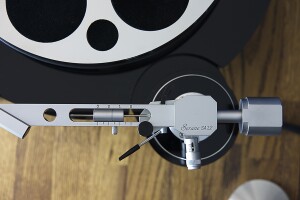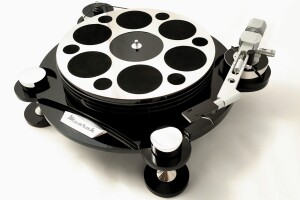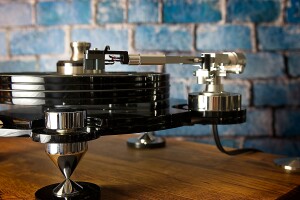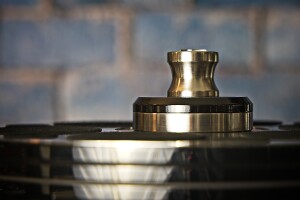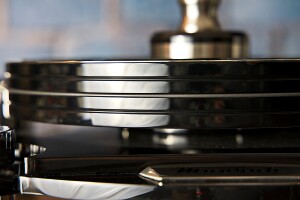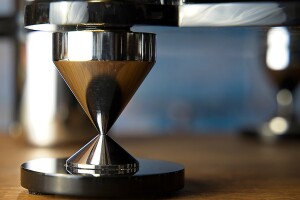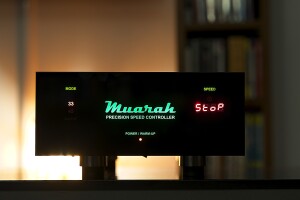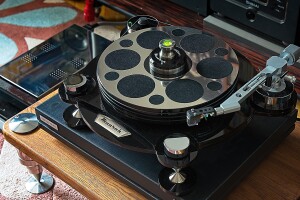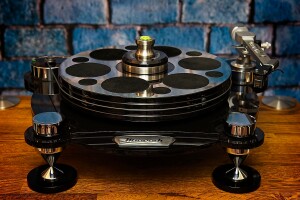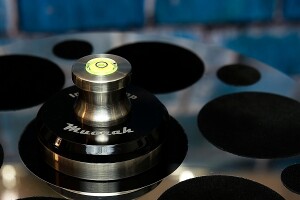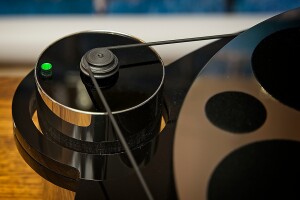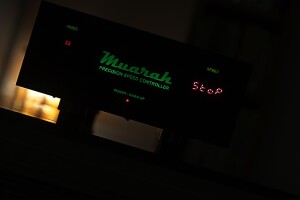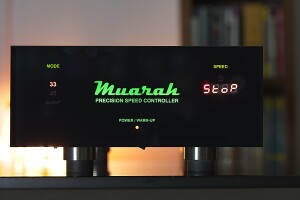A few months ago when reviewing the 10 Hertz All You Need anti-vibration platform I needed turntables to help me assess its effectiveness. One of the decks came from the Polish company Muarah. It left quite an impression on me so it was only natural that I asked for it once more so that this time I could focus my full attention on it. Let’s delve into the performance of the Muarah MT-2 SE or Special Edition.
Introduction
Muarah’s product might have played a role in one of the previous reviews but this one is the very first for the HiFiKnights readers. Hence for those, who are for whatever reason not familiar with the brand let me recap shortly their history. They introduced themselves to the public in 2015 at the Audio Video Show in Warsaw. They also chose an interesting way to do that, as they advertised their presentation as a quadraphonic one. Younger readers probably don’t even know what quadrophonic sound is. Well, it was an audio system one would today call simply 4.0, with four channels instead of two. It was introduced in the early 1970ties and popular for while, hence thousands of 4-channel recordings were made at the time. Today only a few people still remember this format – there are stereo and multi-channel ones (the latter with more than 4 of them). The two men behind Muarah, Jacek Siwiński, and Wiesław Zasada, as it turned out, are fans of quadraphonic sound, and for the 2015 Show, they prepared the whole setup capable of playing such records. And, let me emphasize it once more, they chose it as the brand’s introduction. You have to have… guts to do something like that. Although, it made it clear, that they didn’t plan to follow the same trends as most competitors but follow their path.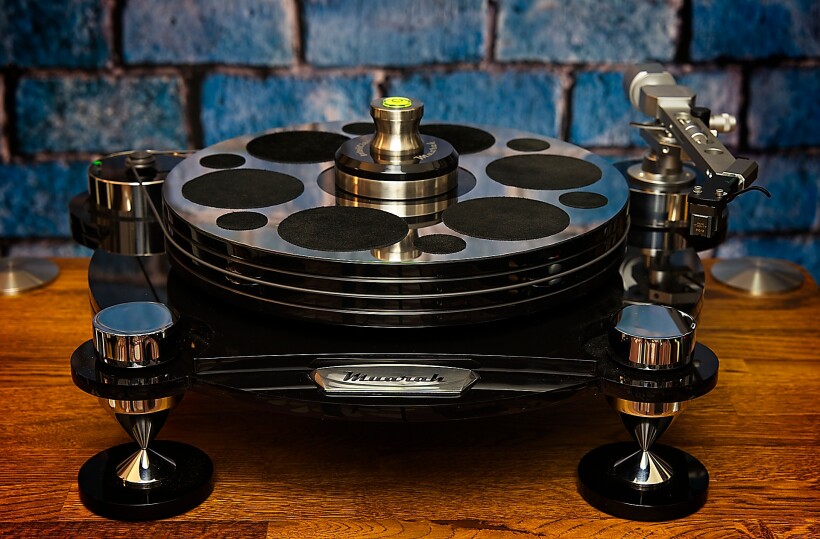
Today, seven years later, the Muarah’s lineup includes three turntables, a tube amplifier, a tube phono stage (that I reviewed some time ago for the HighFidelity.pl, see HERE), and some accessories with the excellent PSC, or Precision Speed Controller for turntables among them. As the Polish company doesn’t offer its tonearm in the past they used Jelco but were forced to look for alternatives. Not that long ago they became a distributor of the Japanese Sorane and a reseller of Morch tonearm. Having these two brands in their portfolio allows them to offer customers a chance to buy both, separate decks and decks with a tonearm(s) selected among those offered by Muarah.
The reviewed model MT-2 SE is a unique proposal and the latest addition to the lineup. It comes with a tonearm selected for it, and yes, it is the highly interesting Sorane SA 1.2. that I sort of „test-used” in the 10 Hertz review and delivered my feedback afterward. Obviously, it was the Muarah team that decided to select this model for this deck and offer them together as truly worthy partners but it’s nice to think I had a little say in it :). When we agreed that this turntable would come back to me for a separate review I asked for PSC to be delivered as well. My previous experience clearly showed that it is a hell of an upgrade, so I felt it had to be included in this review. Luckily, the manufacturer agreed.
Design and features
A characteristic feature of all Muarah turntables is the usage of acrylic as the main material. Another one for the MT-2 SE model may be somewhat familiar to the fans of the first Ford cars, as it is available in any color one wishes, as long as it is black. Only the top model, the MT1 is offered in black and white. So what is acrylic used for exactly? The tested deck sports a sandwich or a 2-layer acrylic base and a heavy (3 kg), thick acrylic platter. It also features Muarah EVO hybrid integrated matte. It is made of polished, non-magnetic steel featuring several round cut-outs filled with exclusive Italian suede inserts with anti-static properties. The whole design rests on three anti-vibration chromium-plated brass feet. The front two feature large, metal knobs on top of them that allow very easy and convenient leveling of the deck. These feet were also developed in-house by the Muarah team.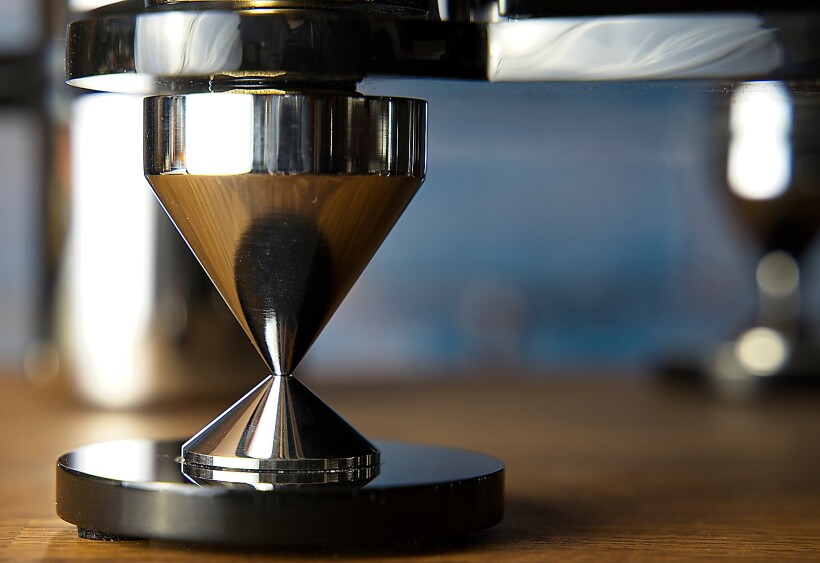
The MT-2 SE supports tonearms of lengths between 9 and 12 inches. It is possible due to a clever solution that allows you to slide (and then fix) the tonearm base as far from the main bearing as necessary to achieve a proper pivot to spindle distance and accommodate a chosen arm. In this case, as this particular model features a specific tonearm, the distance should be fixed for it. The main bearing, as the manufacturer puts it, was designed and made to last a very long time even without lubrication. It includes a ceramic ball, a hardened steel shaft, and a Teflon bed. A high-quality synchronous motor in heavyweight housing rest on anti-vibration feet, and in a round cut-out in the deck’s base to eliminate transmission of vibrations to the main bearing and tonearm. On top of the motor’s housing, there is an on/off button to start and stop operation. If you’re not using an external speed controller, you need to change speed (available are 33 1/3 or 45 rpm) by moving the belt from a smaller to a bigger pulley.
That’s where the optional PSC comes in. It allows you to change the speed with a push of a button, so there is no need to touch the belt (which, by the way, transmits some natural grease from our fingers to the belt even if we keep them clean – avoiding that should be welcomed). It also allows you to adjust speed if needed, eliminating wow because of the much better stability of the mains frequency. It features a few operating modes, with one of them particularly targeting reduction of any noise coming from the motor. That’s not all. The key, patented solution concerns operation together with the InteliClamp®, which is another Muarah development. As the name indicates it is a clamp, and it does what clamps do, but there is also a circuit hidden inside it that measures in a real-time the speed of the platter. It constantly sends (wirelessly) proper information to the PSC which allows it to adjust speed accordingly. Hence the rock-stable rotational speed that in real life translates into a sound that we perceive as much more natural, stable, and focused, because we are very sensitive to any, even tiny changes in the time domain. Interestingly, it is possible to order custom PSC versions to use with other brands’ turntables.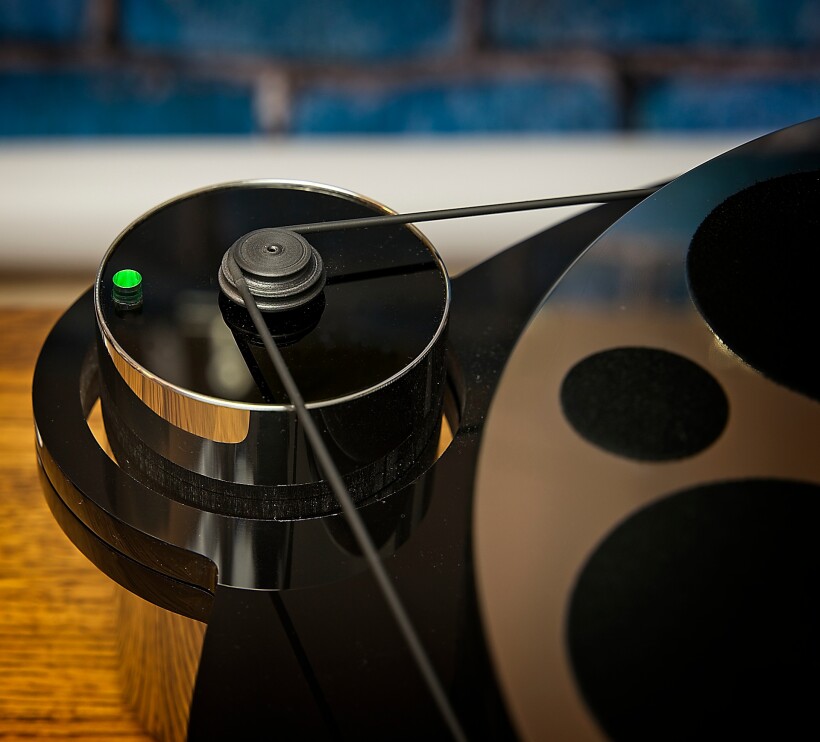
Last but not least, the Sorane SA-1.2 tonearm. When I saw it for the first time the famous Dynavector arms, DV501, 505, and the latest 507 popped up in my mind, because of their somewhat similar shape. Obviously, Dynavector is an even more advanced and much more expensive design. The Sorane SA-1.2’s effective length is 239mm and with a standard headshell it weighs 17g – hence it is a very good partner for cartridges of rather lower compliance. Yet, since the headshell is detachable, one can replace it with, like in this case, a lighter one to better match pickups with higher compliance. It makes this tonearm quite a versatile species.
The main arm component is engineered from one billet of aluminum and assembled with great precision and care. It also features very high-quality bearings. The bearings used for horizontal movement are axial-loaded (angular-contact) thrust bearings. These thrust bearings have zero play and are held in contact by gravity – as the manufacturer explains, you can think of them as acting like a unipivot but with more than one contact point. Because of their design with two tapered seats, they self-align in the presence of a load (gravity) and have exceedingly low friction. Not only does the SA-1.2 feature all necessary adjustments such as VTF, VTA, and anty-skating but smart solutions make most of these adjustments super-easy. I must say, that I truly enjoyed using it, and its make and finish pleased the eye.
Let me offer one practical hint for all future owners of this (and other) Muarah turntable. The manufacturer offers acrylic covers for their decks – get one! Otherwise, you’re in for constant dusting and cleaning fingertips from the acrylic base, platter, and chromed elements. That’s the price one pays for great-looking black acrylic. It’s a small price to pay considering MT-2 SE’s performance (ups – spoiler alert!), but since you can easily avoid paying it, why shouldn’t you do it?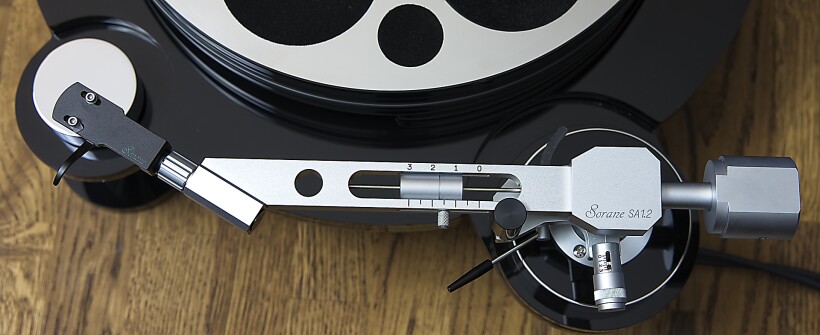
Sound
Last time, for the 10 Hertz platform test, Muarah’s turntable was delivered with the same, very interesting Japanese tonearm, the Sorane SA 1.2. Back then it came with a standard headshell which made it quite a heavy specimen suitable for low-compliance cartridges. Both, back then and now, I used it with my trusted Air Tight PC-3, which is better suited for a bit lighter arms. Last time we replaced the original headshell with one by Pro-Ject, which did a good job. This time however Muarah delivered it with the original Sorane’s headshell, but a lighter one. It turned out to be a very good match for my cartridge. Based on my previous experience I also asked for another product from Muarah’s range, namely the PSC, which stands for Precision Speed Controller. If you ever decide to buy one of their decks remember that the PSC will be the easiest yet substantial upgrade to its performance. I’ll get back to it, but for now, just remember that most of whatever you’ll read below involved not only the turntable but also PSC.
One of the first albums I listened to with the Muarah was Dżem’s „Detox”. It is not an audiophile recording or release, yet it is good enough in terms of sound quality to let the music turn into a beautiful experience. The reviewed turntable did a very good job in terms of PRAT, one of the key aspects of blues. The bass was tight, fast, and quite dynamic (any restrictions in this area come from the recording/release), clearly marking the pulse of every track. If you’re a Dżem fan you know that what made their music so special was Rysio Riedel’s voice. Muarah conveyed it with clarity and precision, yet in a rich, full way with all its intricate features including this incredibly expressive and engaging way of communicating with listeners.
So on the one hand, the turntable was capable of delivering a beautiful, immersive musical spectacle, on the other, it did also convey high energy, rhythm, and pace which are also important aspects of blues. And it did so with an impressive level of clarity and transparency and good resolution, as evidenced by a very convincing rendering of an acoustic piece featuring two guitars. These sounded very natural, agile, and deep, with fingers plucking strings in a very fast fashion, and the sustain and decay phases following in a full, natural way.
The acoustic guitars in the last track of „Detox” sounded so good that as the next „testing tool” I selected one of the greatest flamenco albums I know, namely Paco Pena’s „Flamenco puro live” (a Decca release). Flamenco is not just about the guitar(s) but also singing, clapping, and dancing and with this album, we get it all recorded in an amazingly good way. So whenever the whole system does a good job with this album I feel as if I were there, when they recorded it. With the MT-2 it sounded a touch brighter than with my JSikora, or in other words, the sound was not as rich and dense (but wasn’t really bright!), but the dynamics, clarity, and highly energetic presentation were not that far off compared to a significantly more expensive competitor. Both the vocals, clapping, and dancing (floor tapping) sounded believable, or realistic if you will. It did feel (almost) like I was there seeing the dancers, musicians, and singers, and feeling the energy and excitement of a live performance. Please note, that whatever the system, it is always an „almost” experience, but some systems get closer to it than others, and MT-2 SE with the rest of my setup was one of the former.
Changing the mood I reached for the soundtrack from the fantastic (original) „Blade Runner” with music composed by Vangelis. When listening to electronic music it is hard to talk about ‘natural’ sound, but it did sound ‘listener-friendly’ with Muarah starting from the very first track and the characteristic voice of Harrison Ford (playing Deckard). The sound was dense, rich, and slightly warm but without any sense of system adding anything on top of the recording. The lower end extended nicely to the depths of an almost sub-sonic electronic bass, with proper might but still quite clear, and well-defined. The (bit less present on this album) upper end was airy and open, yet strong and smooth. Still, it was the rich, colorful midrange that played the largest role in building the unique, so immersive atmosphere of the soundtrack.
The MT-2 SE equally convincingly presented the large scale of sound, its intensity, and spatial aspects of the recording. I truly liked the size of the soundstage, significantly bigger than on any previous album, with sounds floating freely way past the space between speakers and at the times even almost surrounding me (in a strictly stereophonic system). Long story short – it was a very special experience for the big fan of the movie and its soundtrack And the fact that it was delivered in a touch smoother and warmer way than with my JSikora did not change my delight.
Turning to a bit „heavier” music I picked Mark Knopfler, AC/DC, and Metallica from the shelf. Mark’s album was a clear winner in terms of sound quality. It sounded clear, quite transparent, and rich at the same time, with nicely extended, kicking, tight bass, dense and present guitars and vocals, and slightly withdrawn treble. The latter, mind you, is a feature of the recording, not the turntable. I particularly liked the way Knopfler’s voice and his guitar sounded. Nice timbre, texture, natural flow, and presented reverb – it was all there. Let’s add (again) a steady pace and rhythm, with electric bass, when needed, running the pulse of a recording in an impressive, yet non-dominant way.
I was curious whether the MT-2 Special Edition would do an equally good job with even heavier music hence the „Back in Black” and the „Metallica” or the ‘Black album’ followed. The Muarah deck supported by Sorane tonearm did not seem to care about the change of pace. It simply shifted a gear up and delivered a dynamic, quite energetic performance following the wild Aussies and the more ‘serious’ American band. It proved again that PRAT is one of its prime qualities no matter how fast the pace is. While these are not audiophile recordings, MT-2 Special Edition coherently played them with powerful bass and rich midrange that electric guitars benefited from. Like in most rock recordings treble was the „weakest link” so to speak, but the Polish turntable did a good job limiting any excessive harshness, graininess, and brightness just by a little bit, but enough so that it didn’t affect the perception of the music as a whole.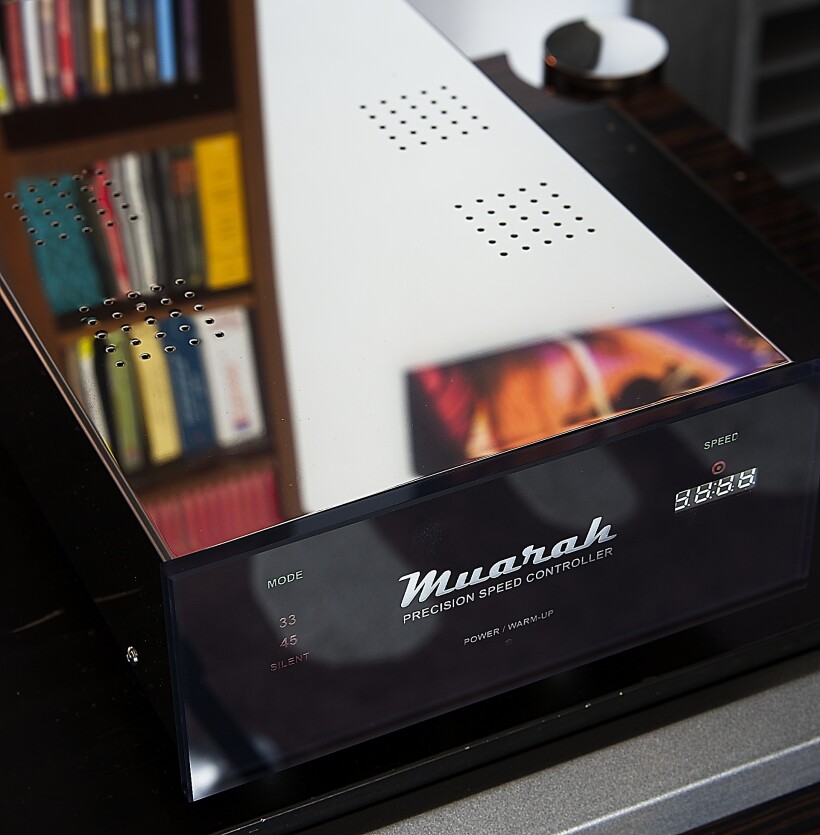
An ‘audiophile’ release of Danish/American trio Blicher Hemmer Gadd was yet another change of pace that didn’t seem to affect the MT-2 Special Edition at all. It’s a high-quality release with one of my favorite drummers, Steve Gadd, recorded in front of a live audience in a small venue. While some recordings catch the acoustics of the venue even better, the engineers responsible for this one did a good job too. Muarah nicely rendered the whole space, and carefully placed all three musicians on the small, yet three-dimensional stage with enthusiastic fans in front of them. This time the dominant feature of the presentation was the particularly natural flow of music and the beautifully conveyed timbre of each instrument (saxophone, Hammonds, and drums). It was hard to resist snapping finders to the rhythm or smiling when listening to this cheerful music so skillfully performed, recorded, and re-played.
As I’ve mentioned before, I love Steve Gadd, so naturally, my attention was focused mostly on his performance and the sound of his drums. Everything I’ve already written concerning tight, fast, ‘springy’ bass was still true. This time, however, the treble, or the cymbals, in this case, were quite vibrant, crisp, and very well differentiated proving that any impression of a withdrawn treble on previous albums came from them, not the tested turntable. What kept listening to this performance so interesting and engaging was how well the reviewed turntable, using an abundance of information, tiny details, and subtleties read from the groove, differentiated both the bass and the treble. That allowed me to follow Steve Gadd’s mastery in a way, that not that many turntables, and surely almost none from this price level, usually offer.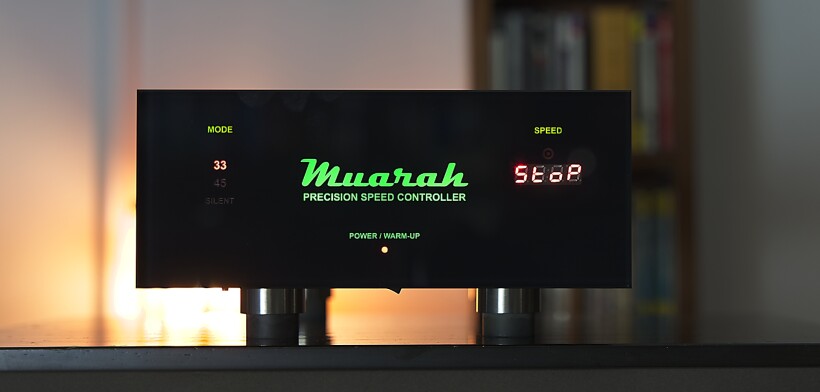
Summary
The Muarah MT-2 SE is a beautifully-made, well-designed one hell of a deck! Its price is considerable but close to half of it is the cost of the very interesting, versatile, easy, and pleasant-to-use Japanese Sorane SA-1.2 tonearm, which offers a rock-solid performance. The PSC speed controller paired with the InteliClamp® will increase the final figure on your bill even further, but it is a must-have upgrade. Don’t get me wrong – the MT-2 SE is a great performer even without it. It will deliver a dynamic, focused, coherent, precise, open, resolving sound regardless of the music genre you’ll task it with. It’s just that with the PSC it will do it in an even better, more convincing, and more immersive way. If you ask me, it’s a serious contender to the throne at its price range, one you should put on a short list of potential purchases if you’re in the market for a serious, good-looking, versatile, and still upgradeable record player.
Technical specifications (according to the manufacturer):
Muarah MT-2 Special Edition
- Platter weight 3.5 kg
- Total turntable weight (w/o tonearm) 11 kg
- Width 47,5 cm (9”tonearm) / 54 cm (12”tonearm); Depth 40 cm Hight (w/o tonearm and record clamp) 17 cm
- Platter height: 4 cm
- Supported speeds: 33 1/3 RPM / 45 RPM, manual change (unless used with PSC)
- Pivot to spindle distance range: min. 210 / max. 295mm
- Motor & drive transfer AC synchronous, rubber belt
- Power source 230V, 50Hz
Sorane SA 1.2
- Whole Length: 310mm
- Effective Length (Tonearm pivot – stylus): 239mm
- Practical Length (Tonearm pivot – Spindle): 223mm
- Overhang: 16mm
- Offset angle: 22.25°
- Horizontal moving sensitivity: 30mg
- Vertical moving sensitivity: 20mg
- Vertical Tracking Force (VTF) range: 0-4.5g (2.5g + 2.0g)
- Cartridge + Headshell weight range: 15-45g
- Height Adjustment(Plinth to arm wand centerline): 15-55mm
- Vertical Bearing: Miniature Radial Bearing
- Horizontal Bearing: Miniature Radial Bearing
- Output plug: RCA (XLR is an option)
- Output cable: Single core shield copper
- Tonearm Audio Lead wire: OFC 4N Copper
- Headshell lead wire: Copper with gold plated terminal
- Headshell: Machine-tooled Aluminum
- Tonearm Net Weight: 750g
- Attached standard Headshell Net Weight: of 17g
PSC
- Nominal speed 33.33, 45.00 rpm
- Output 230V (5W max), <2% THD (Note 1)
- Output frequency stability < +/-0.00005%
- Output frequency error < 0.0005%
- Speed measurement resolution +/- 0.01 rpm
- Pitch control +/-2rpm with 0.01rpm resolution
- Automatic speed regulation accuracy (in AUTO mode with InteliClamp®) 33.33, 45.00rpm +/-0.01 rpm
- Wireless band connection PSC – InteliClamp® ISM 868MHz
- Dimensions (width/length/height) 21cm/35cm/11cm
- PSC weight is 3.1kg
- InteliClamp® dimensions (diameter/height) 78mm/52mm
- InteliClamp® weight 570g
- Power consumption < 40VA (Note 1)
- InteliClamp® battery lifetime approx. 4 months (one record listened to per day)
Note 1: Parameters can vary for different PSC version
Prices (when reviewed):
- Muarah MT-2 SE: 5.470 EUR
- Muarah PSC + InteliClamp®: 1.540 EUR
- Muarah dust cover: 270 EUR
Manufacturer: MUARAH
Associated equipment:
- Digital source: a custom passive server with WIN10, Roon, Fidelizer Pro 7.10, JCAT NET XE, and JCAT USB XE cards with FERRUM HYPSOS Signature power supply, KECES P8 (mono) linear power supply for the server, JCAT USB Isolator
- D/A Converter: LampizatOr Pacific +Ideon Audio 3R Master Time (USB signal regenerator)
- Analog front end: J.Sikora Standard MAX turntable, J.Sikora KV12 tonearm, AirTight PC-3, phonostages: Grandinote Celio MK IV, ESE Lab Nibiru V 5.
- Power amplifiers: GrandiNote Shinai
- Preamplifier: Audia Flight FLS1
- Loudspeakers: GrandiNote MACH4, Ubiq Audio Model ONE Duelund Edition.
- Interconnects: Bastanis Imperial, Hijiri Million, Hijiri HCI-20, TelluriumQ Ultra Black, KBL Sound Zodiac XLR, David Laboga Expression Emerald USB, David Laboga Digital Sound Wave Sapphire Ethernet
- Speaker cables: LessLoss Anchorwave
- Power cables: LessLoss DFPC Signature, Gigawatt LC-3
- Power: Gigawatt PF-2 MK2 and Gigawatt PC-3 SE Evo+; a custom power line with Gigawatt LC-Y in-wall cable; Gigawatt G-044 Schuko and Furutech FT-SWS-D (R)
- Network: Silent Angel Bonn N8 + Silent Angel Forester F1 + optical LAN isolator
- Racks: Base VI, Rogoz Audio 3RP3/BBS
- Anti-vibration accessories: ROGOZ-AUDIO SMO40 and CPPB16 platforms and ROGOZ AUDIO BW40MKII feet, Franc Accessories Ceramic Disc Slim Feet and Wood Block Platform, Graphite Audio CIS-35 and IC-35





